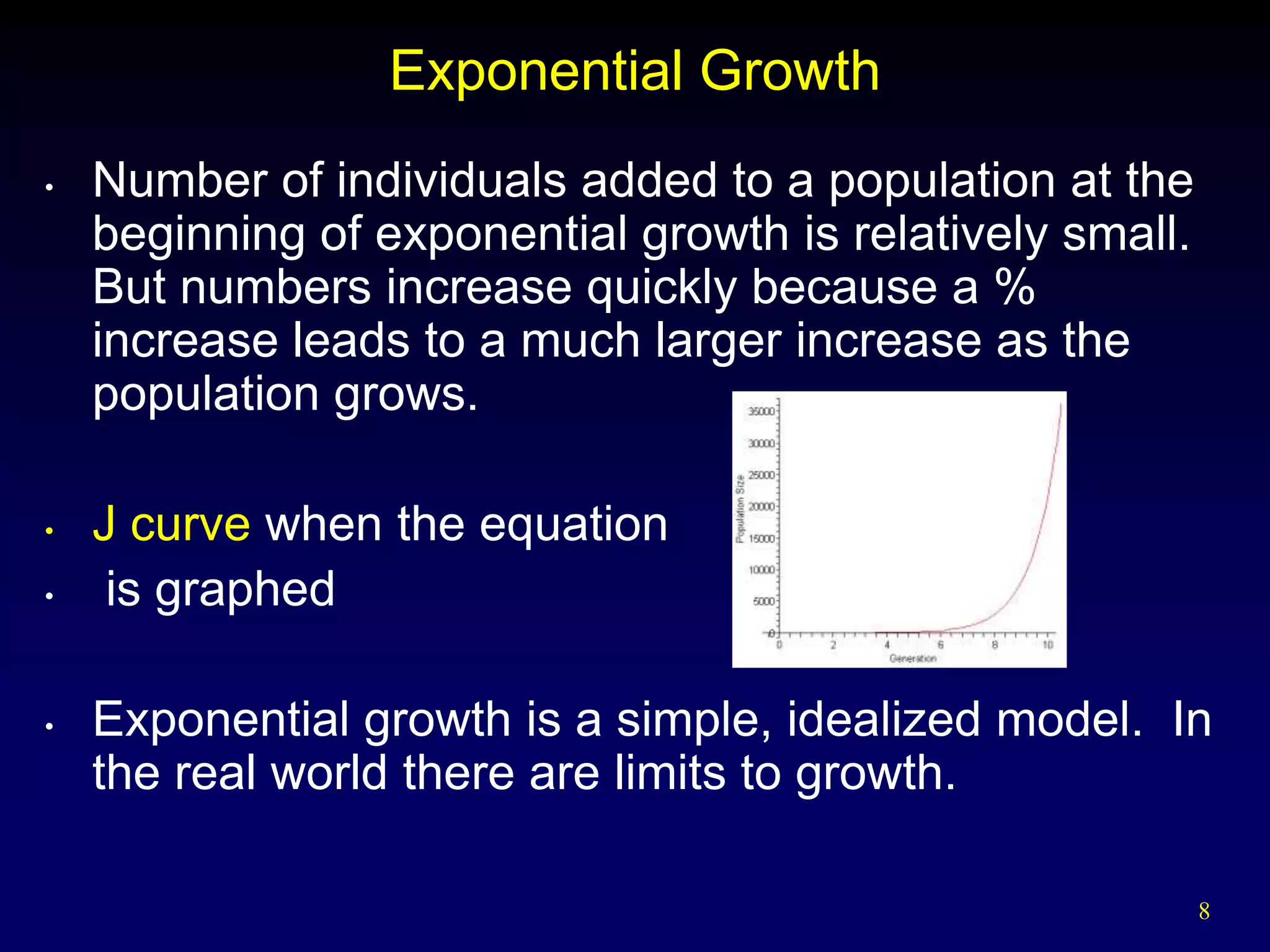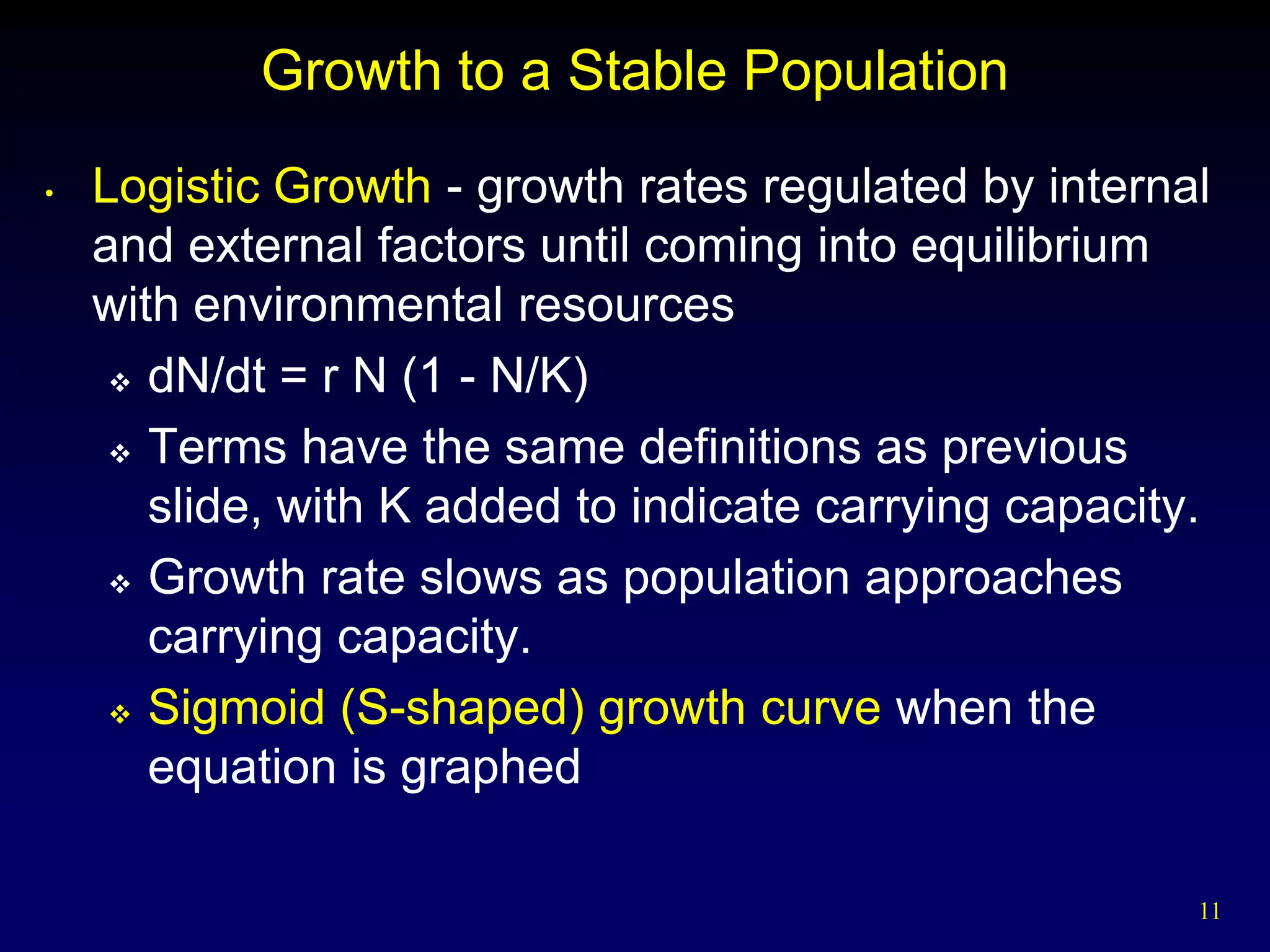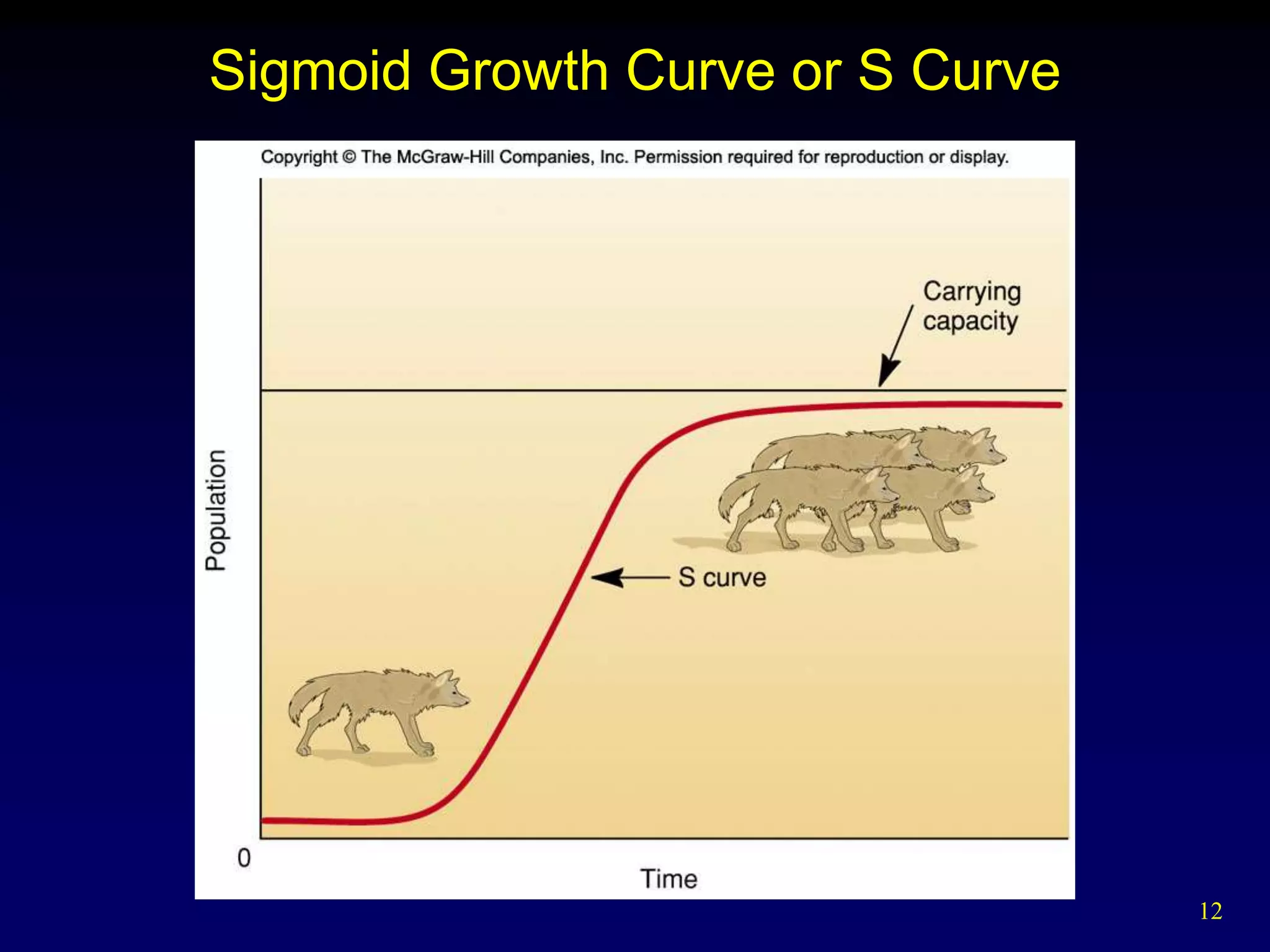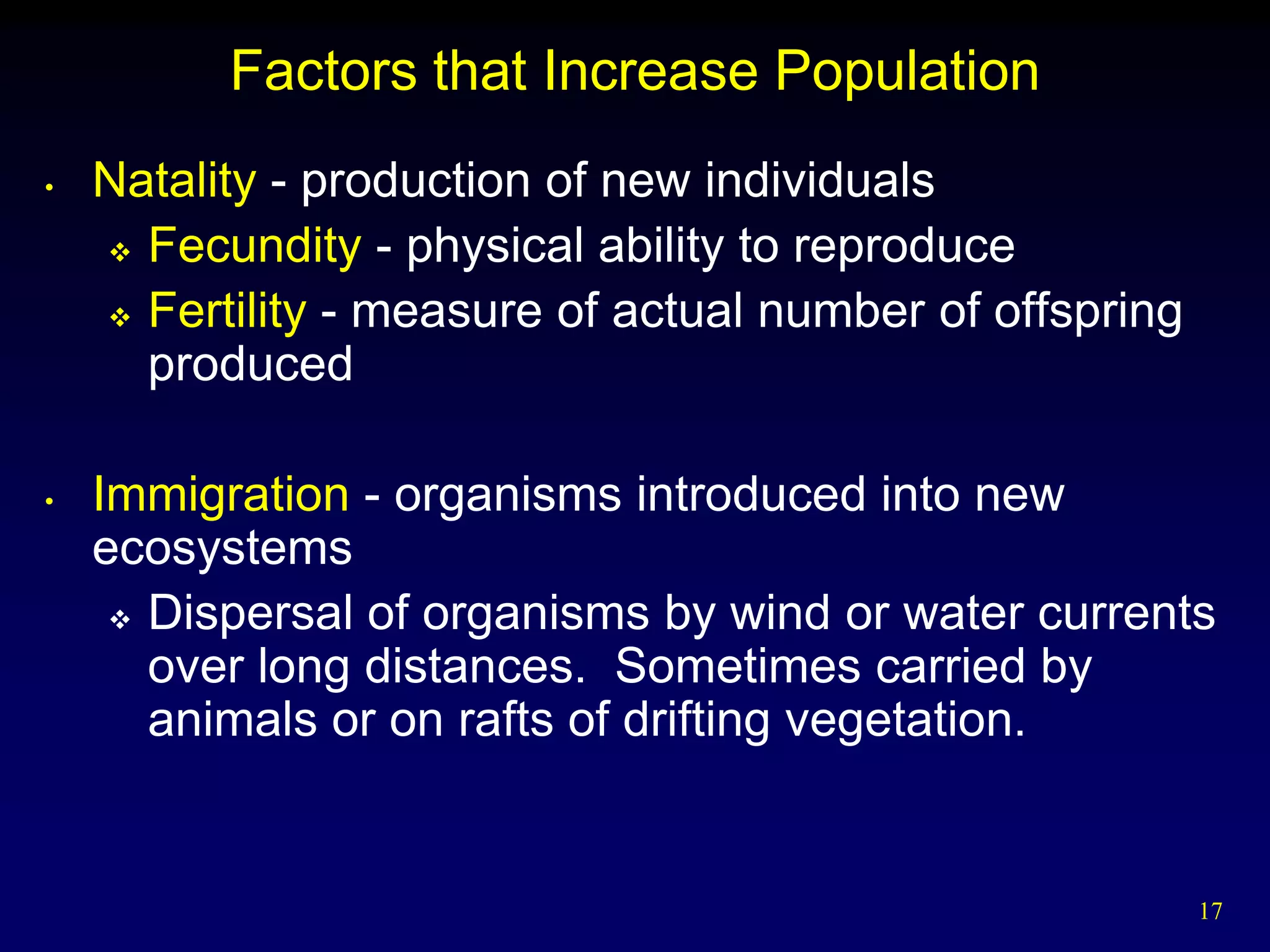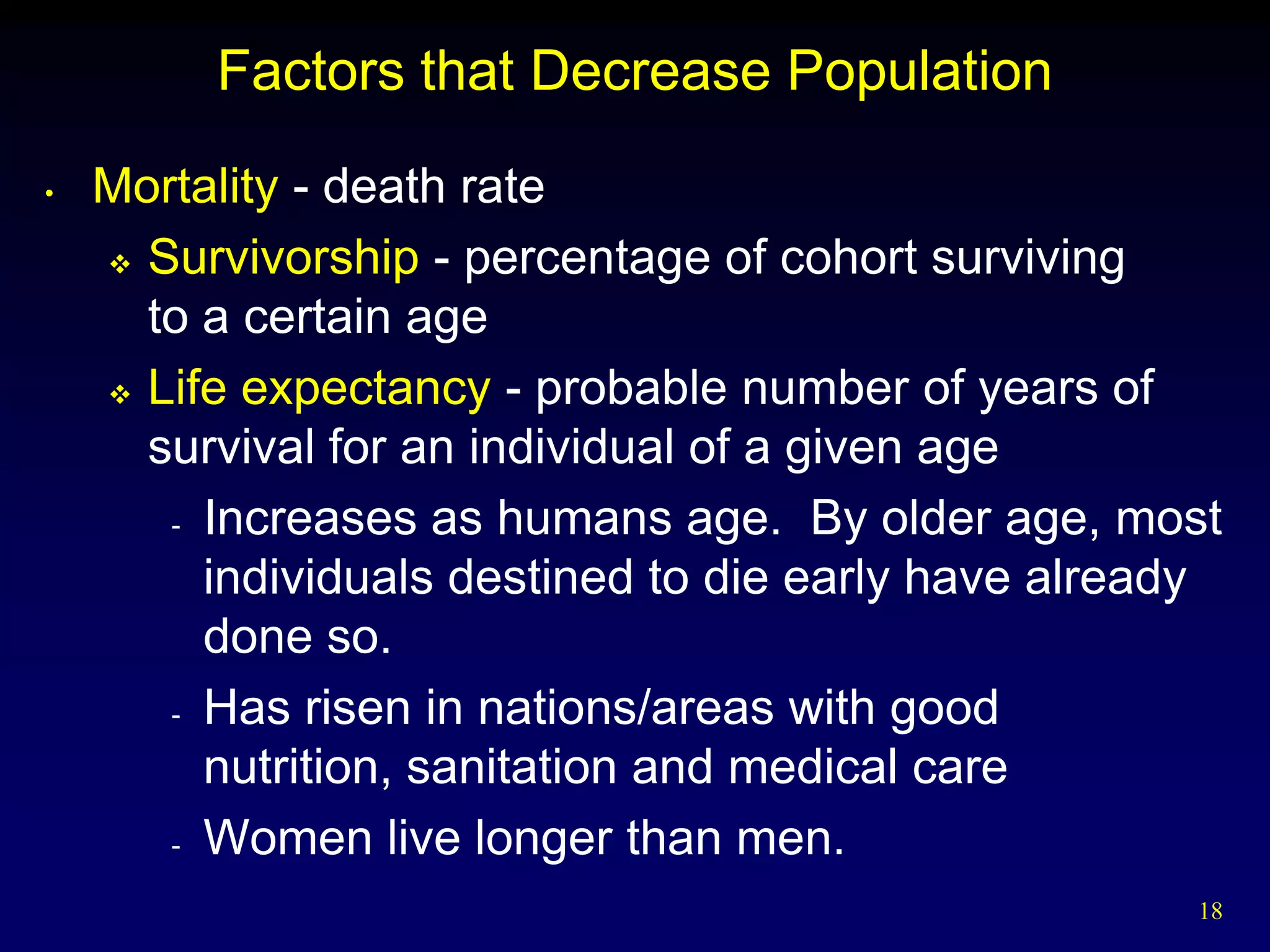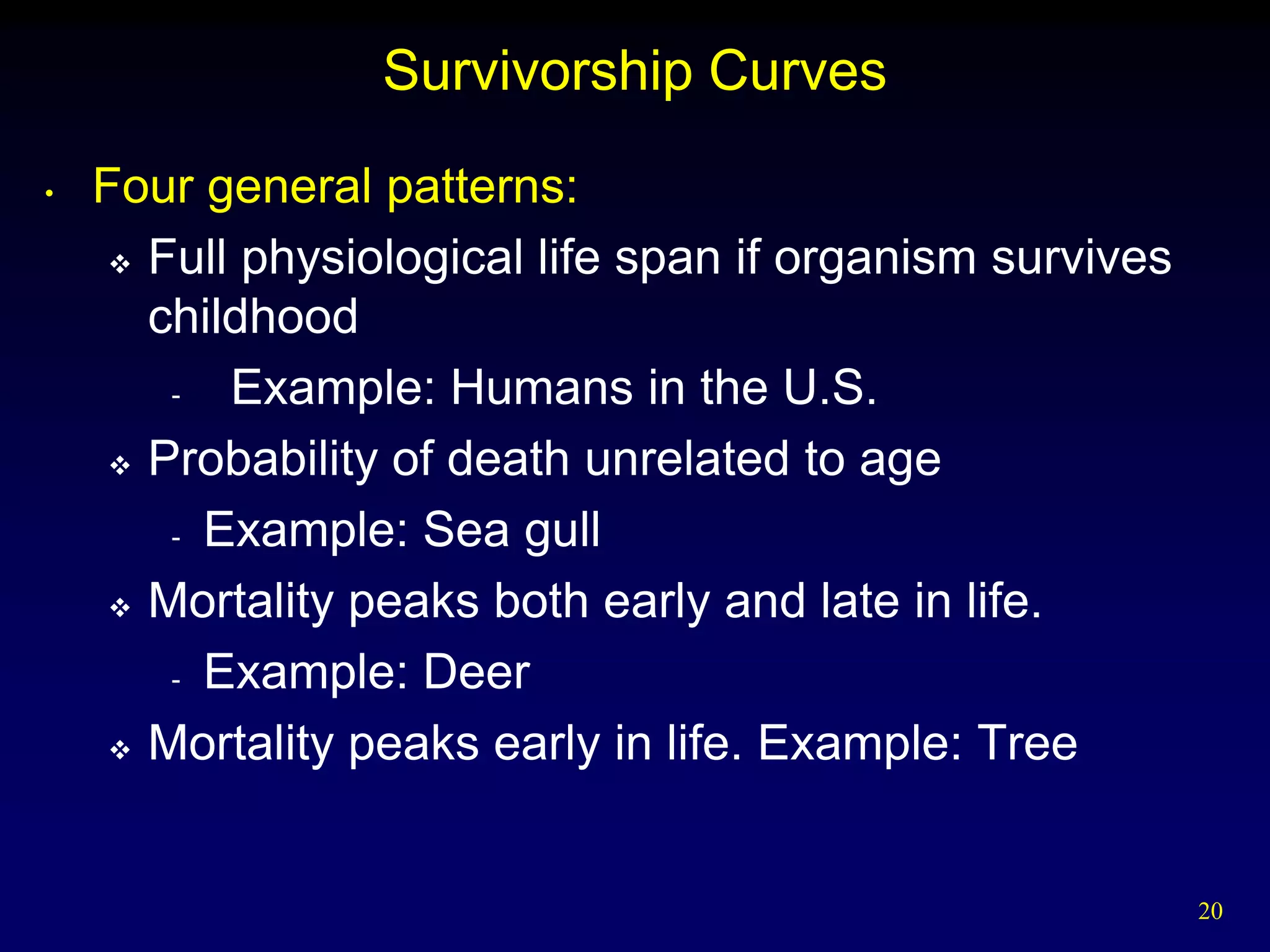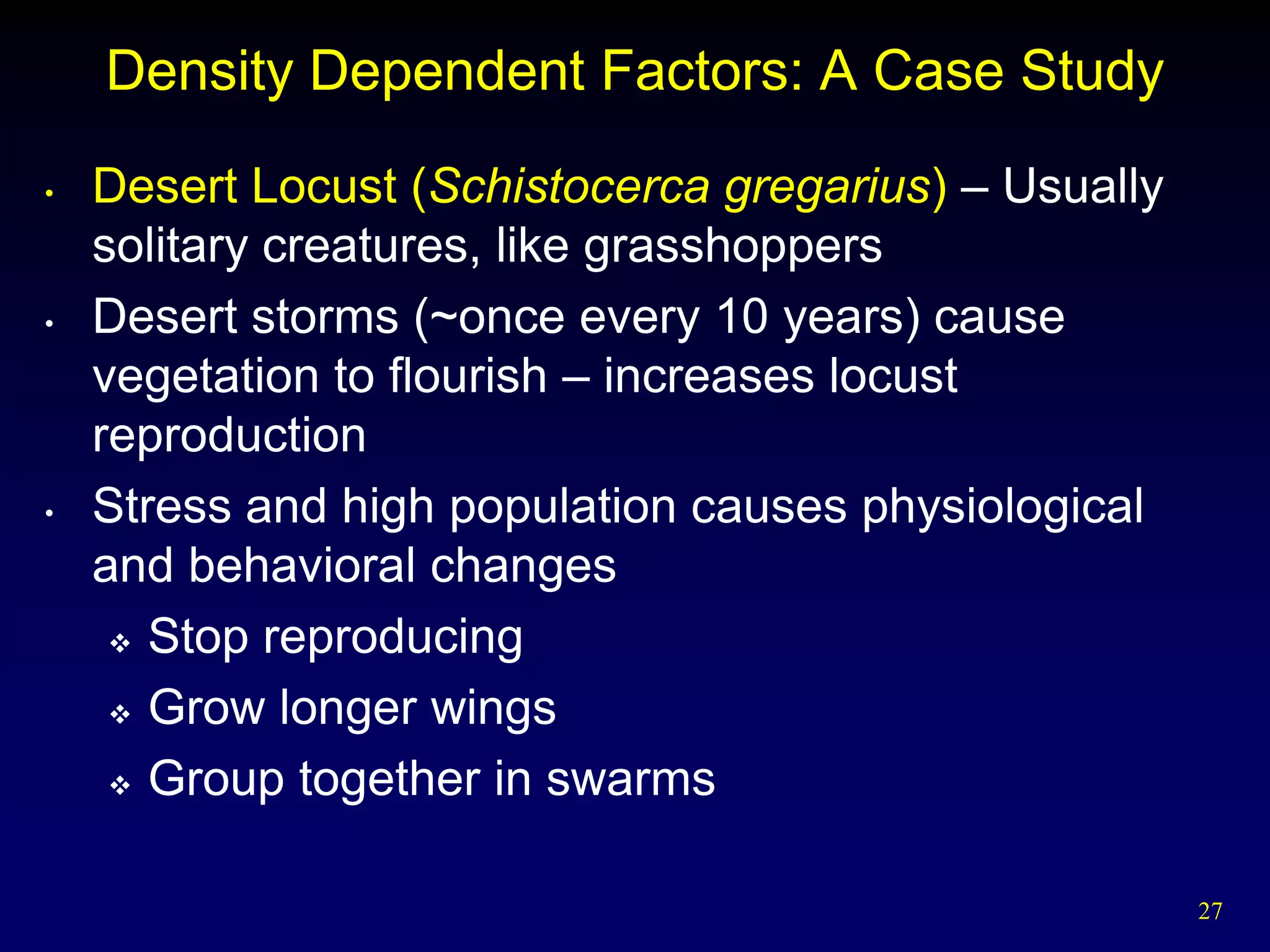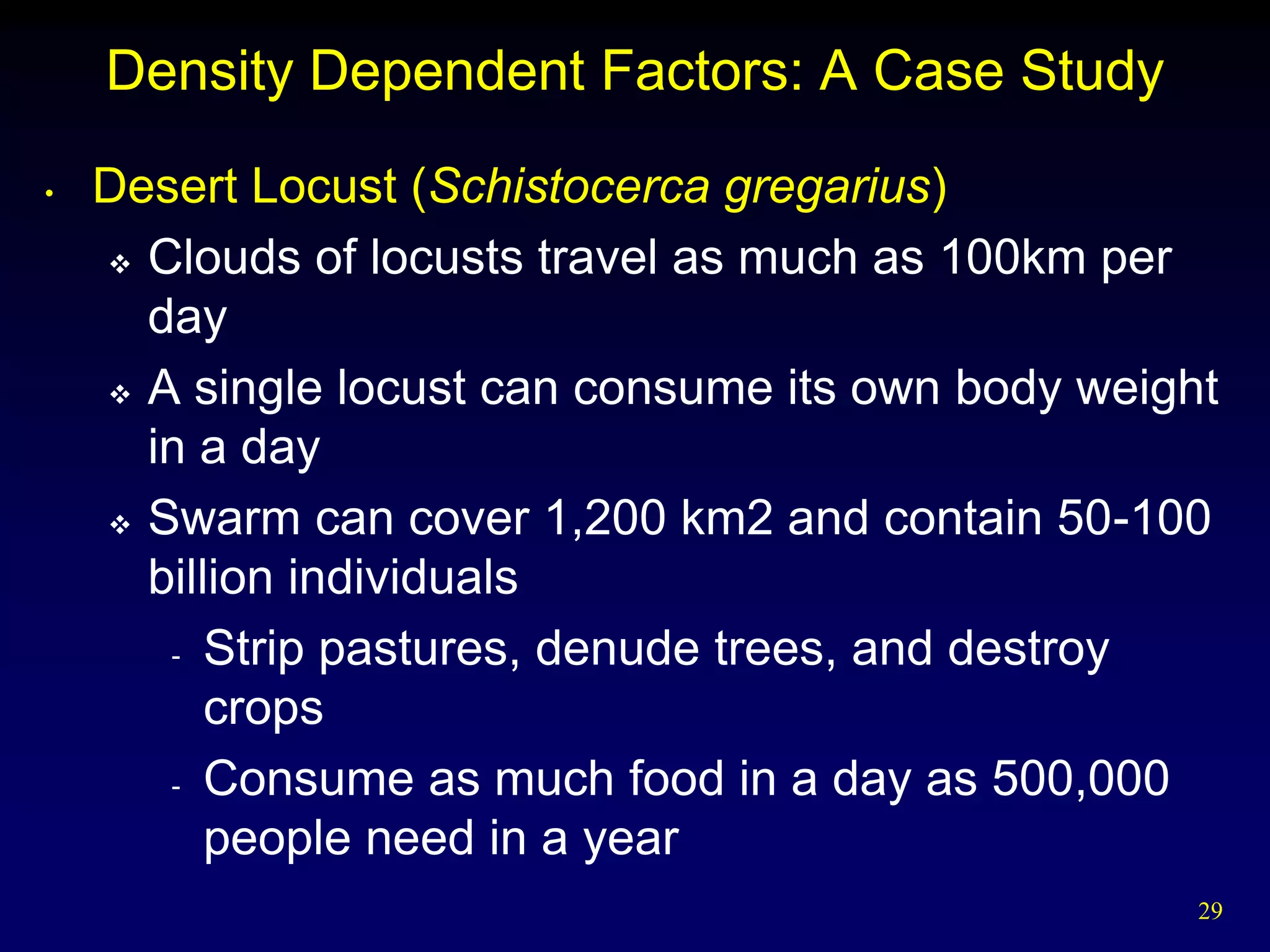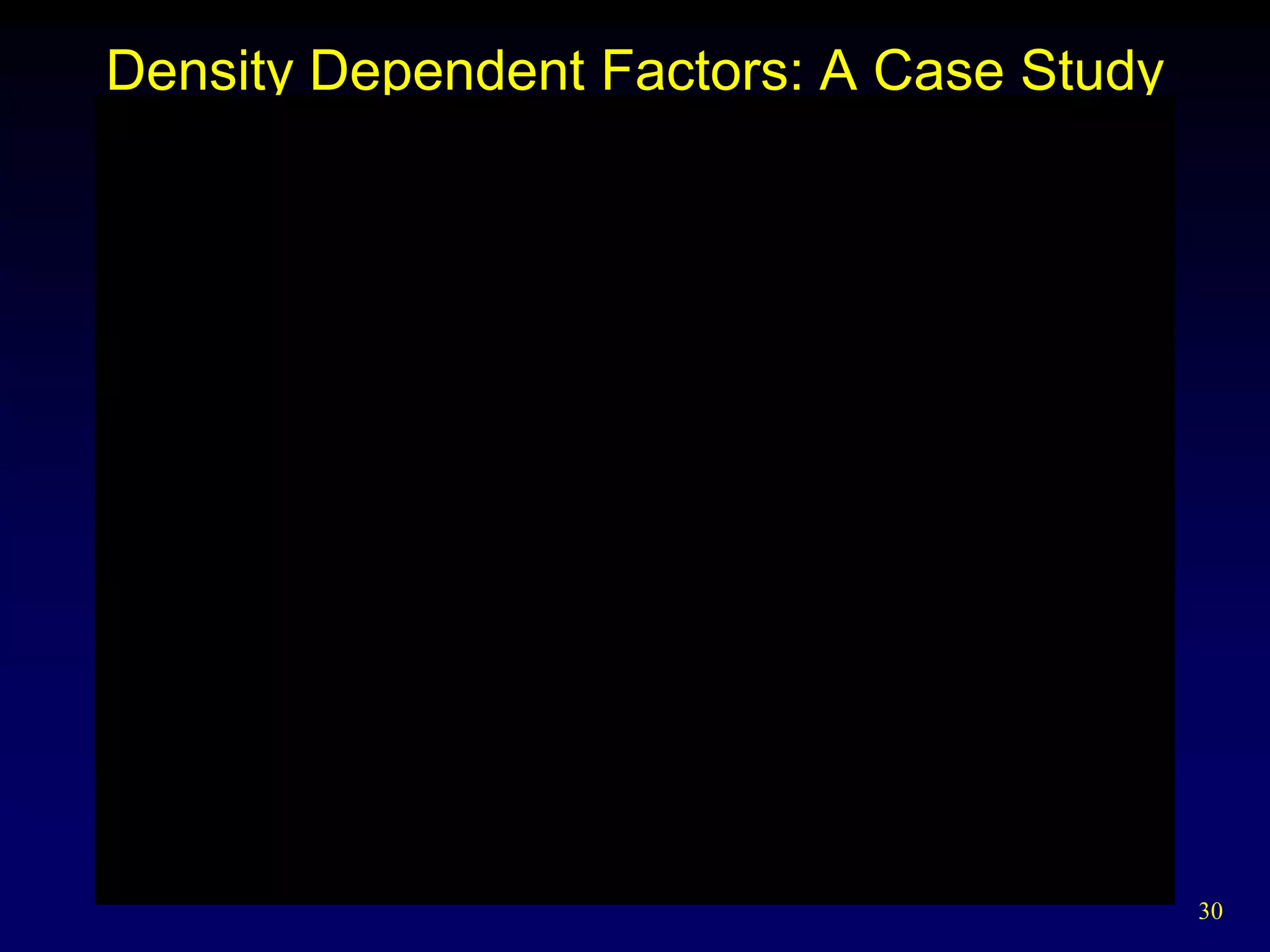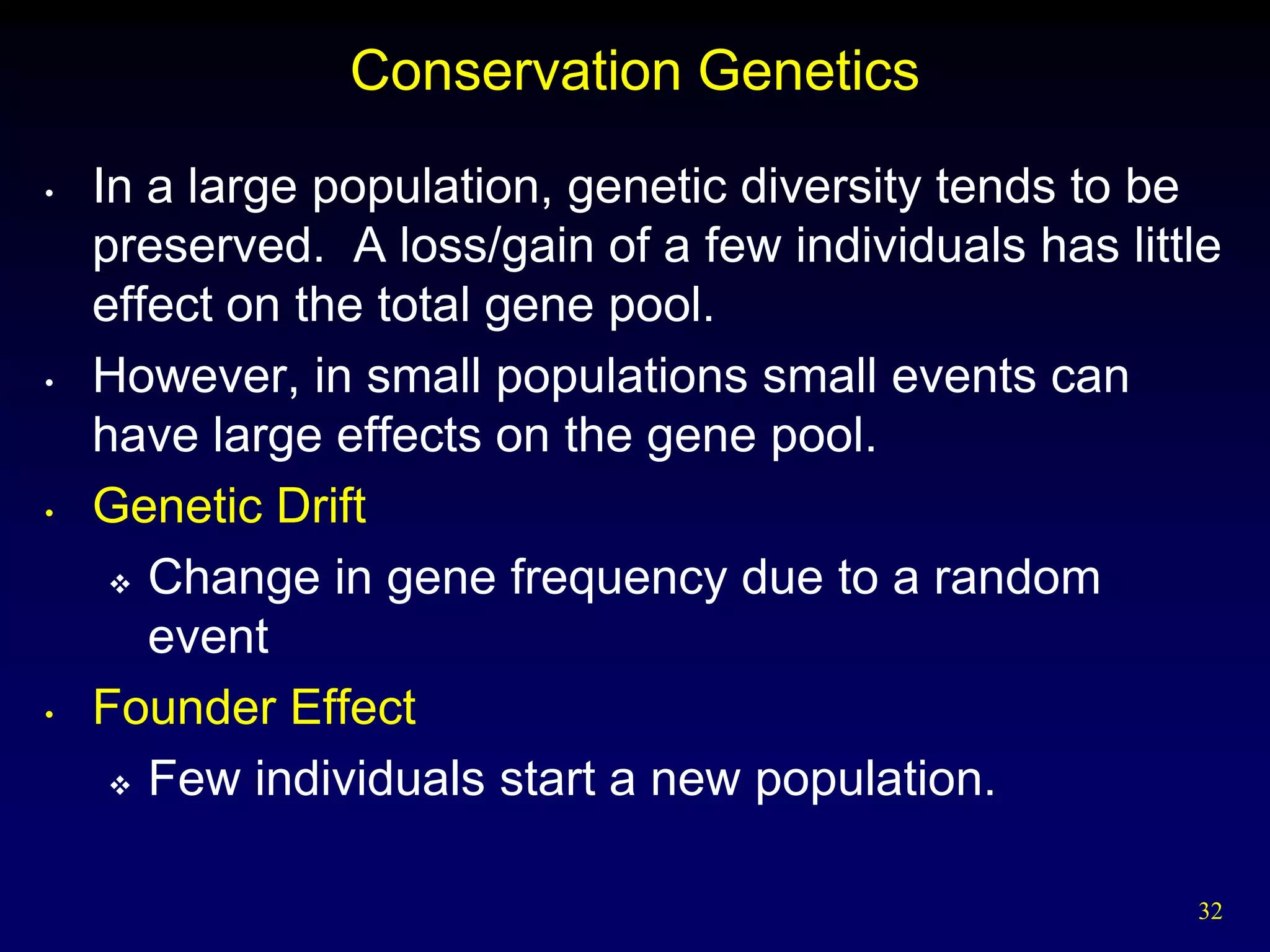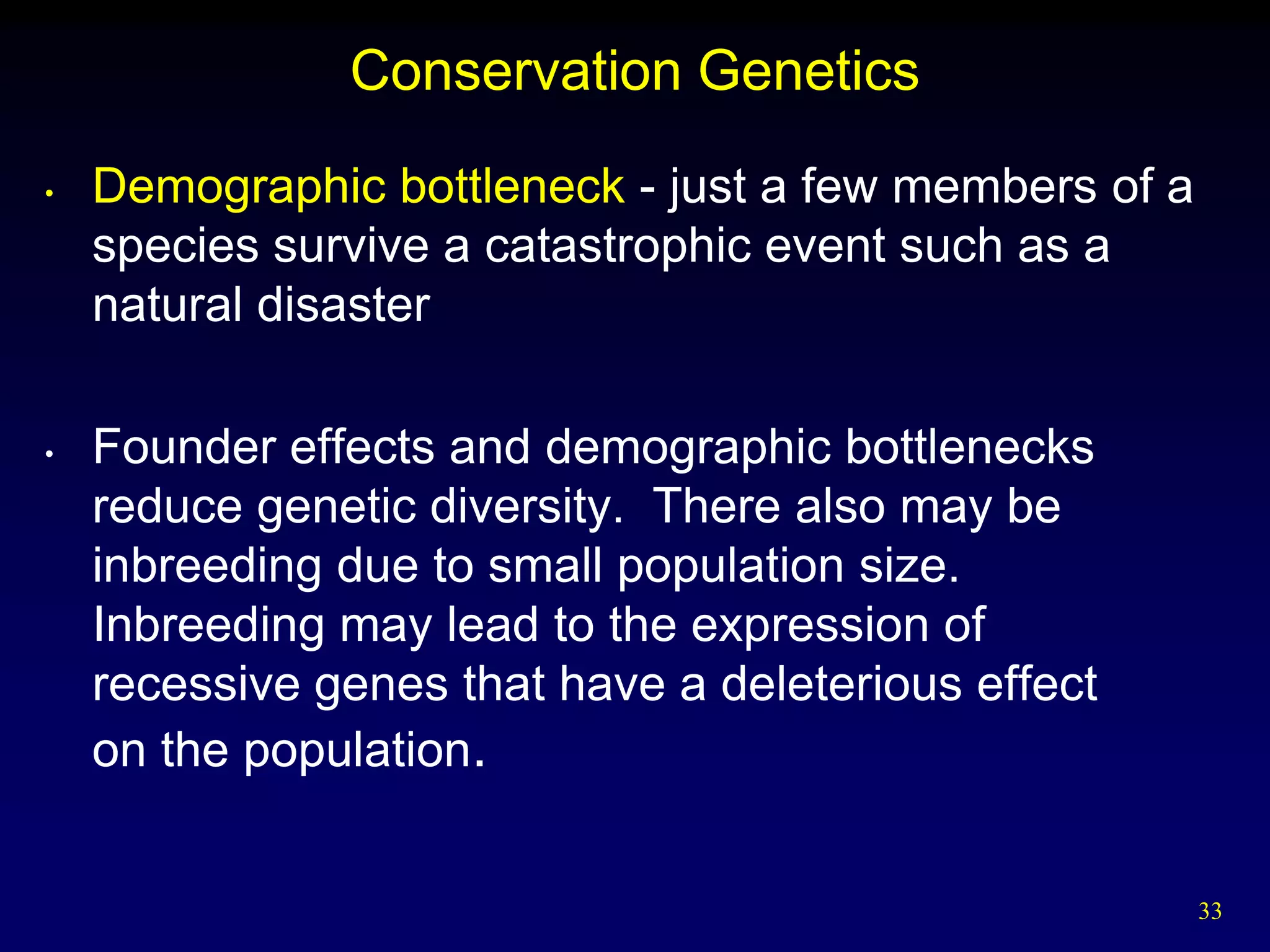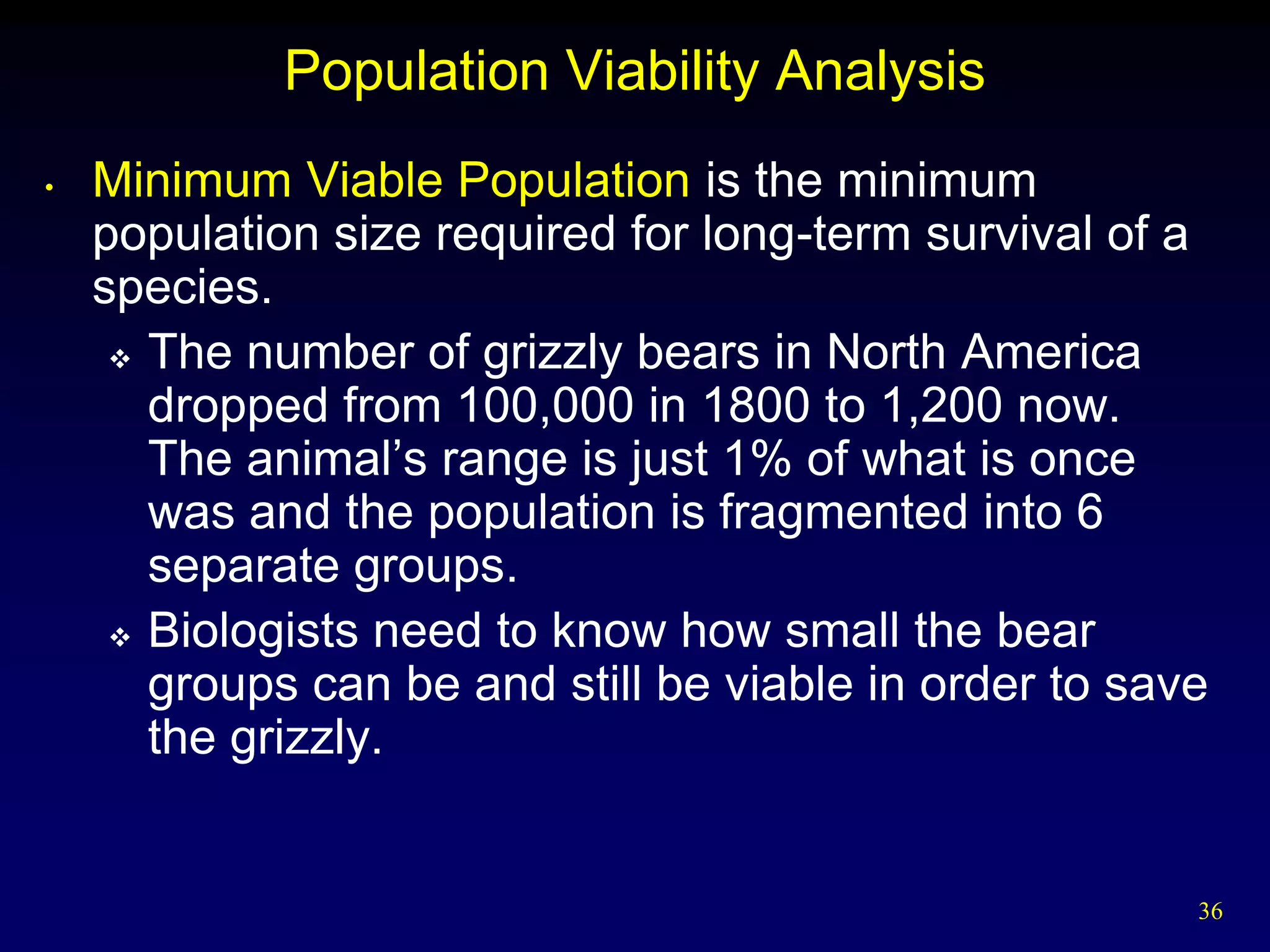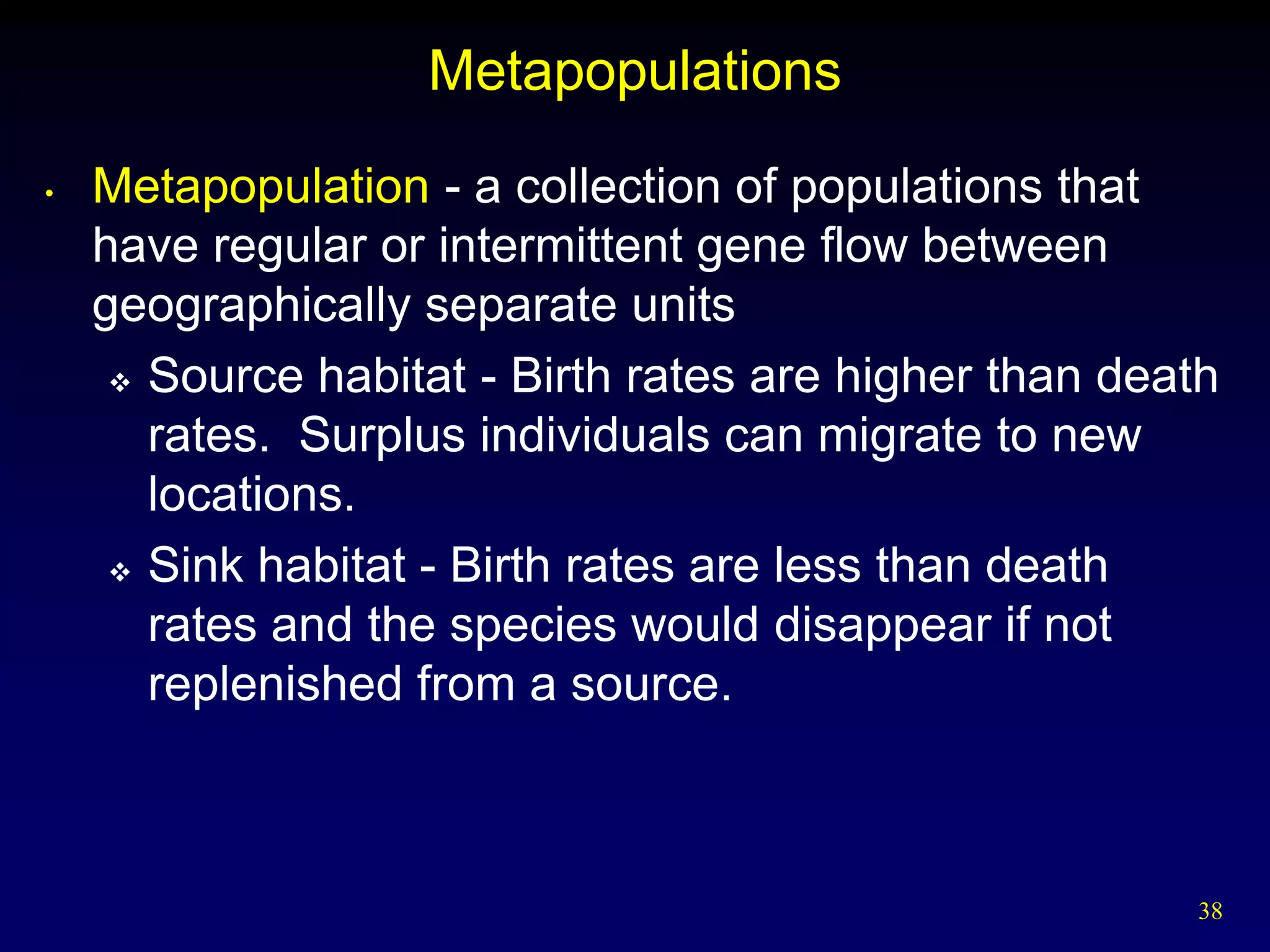The document discusses population biology and the factors that influence population growth patterns. It describes concepts like biotic potential, exponential and logistic growth models, and carrying capacity. Density-dependent and density-independent factors are explained as regulators of population size. Specific topics covered include r/K selection strategies, life history traits, survivorship curves, and case studies of predator-prey cycles and locust outbreaks. The summary concludes with discussions of minimum viable population sizes, conservation genetics challenges, and metapopulation dynamics.




